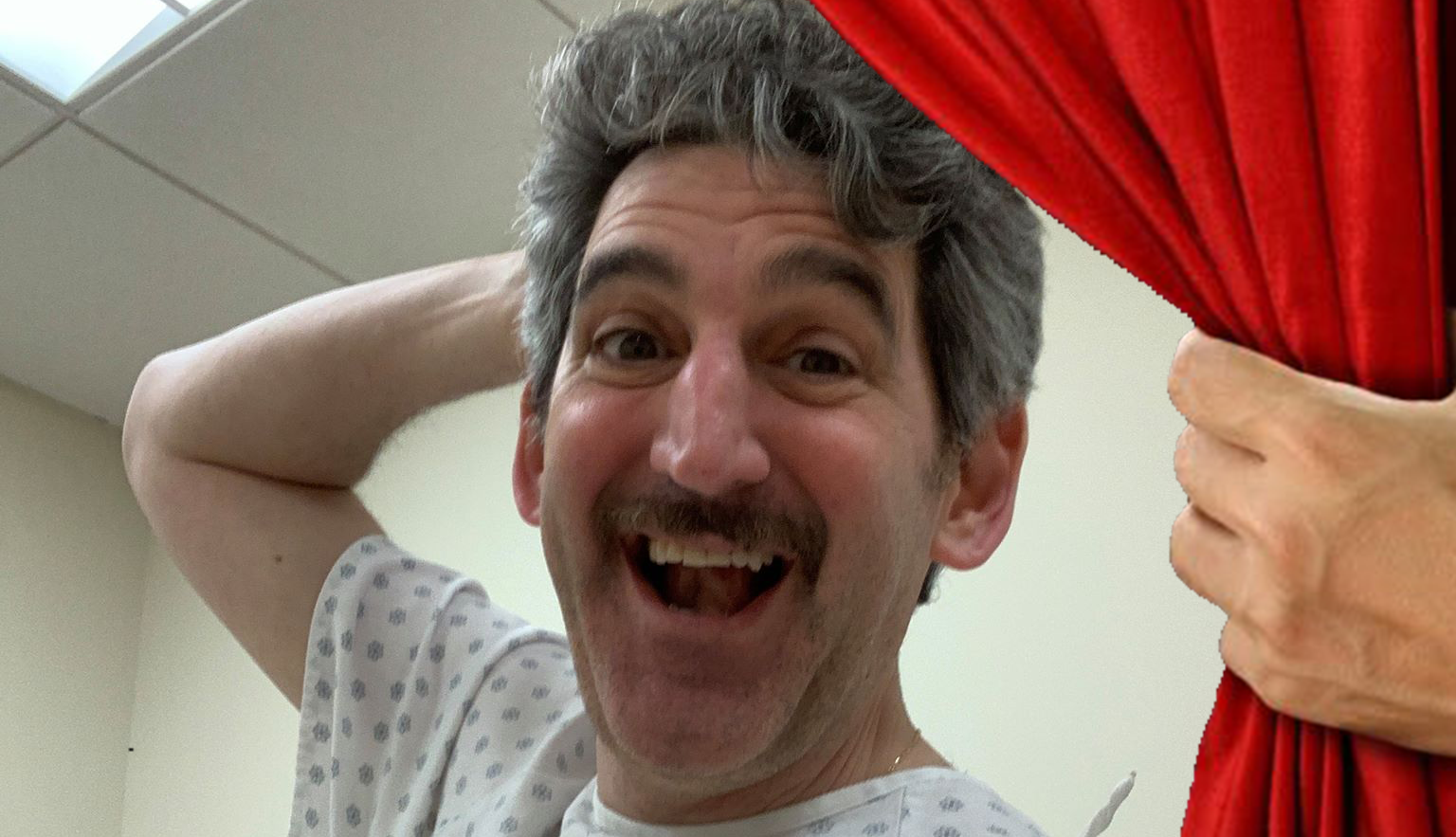The Life of a Standardized Patient During COVID-19
- by
- Aug 26, 2020
- Reviewed by: Amy Rontal, MD

Being an actor is about adaptation.
On stage, I’ve had moments where all the lights went out and I had to improvise until they came back on. Or the silverware is missing and I find a way to tactfully eat dinner with my hands.
Ten years ago in October, I was hit with Bells Palsy and half of my face fell down; knowing that my commercial brand had changed in an instant, I called up my agent and told them to submit me for Halloween commercials. (I mostly recovered by the following January.) And this past spring, all stage and on-camera work disappeared in an instant. These mediums require people to be close together in order to make the magic happen. There was no practical way for these mediums to adapt.
However, I’ve also been working as a business role-player and standardized patient for many years now. Business meetings were already adapting to Zoom and other online platforms. Doctors were already venturing into telemedicine.
When our world changed, this type of work was positioned to succeed. After a couple of months of intense miracle-making, the medical institutions are now recreating the vital experience of one-on-one simulated encounters with actors, and moving it online.
I am incredibly impressed at how each of the medical institutions with which I work have found a way to make it happen. They’ve thought through the student experience from beginning to end, recreated their training process, and acquired the technology to support the experience.
What the medical institutions need from us actors vary from place to place, depending on their values and priorities (more about that in another blog post), but in general we actors are challenged with a little more to juggle … and our lives also became a bit easier.
COVID-19 Standardized Patient Training
Even for cases we have done before, we’re being retrained for the online versions. This might be half an hour of a quick technical procedure talk and a read through the case. Or it can be a three-hour session in which all of us who will be working delve into our personal biases regarding the character we’re portraying, watch a video of the case being done previously, prepare for the technical requirements of switching between online platforms (one for the encounter and another for checklists, for example), and then delve into all of the facts of the case to mine it for trouble-shooting and absolute consistency.
Again, it varies according to the priorities and needs of the medical institution. I’ve had people training us on the case freeze and/or magically disappear. When this happens, I’ve been lucky enough that someone else familiar with the case steps right in to be of service. We can be as prepared as we want. The Internet gods will have their way.
Virtual Standardized Patient Technical Requirements
One medical institution has me and my fellow standardized patients log into the Zoom meeting and then just sends us to a breakout room for the remainder of the day. There’s an instructor assigned to watch my individual sessions. There is no questionnaire.
Another medical institution has the same format, with an additional program that must be opened in Google Chrome in order to fill out a checklist.
A third medical institution has the Zoom standardized patient breakout rooms, an additional program for checklists, and then a running thread on Microsoft Teams so we can make each other aware of technical issues, ask questions of the case managers, and receive thorough feedback from those who have watched our sessions.
Again, students will freeze or disappear. If we can’t get them back, I do my best to get my notes to the instructor. Hopefully the student will get another crack at the encounter at a later time.
Navigating a COVID-19 World as a Standardized Patient
Again, different medical institutions deal with current events differently. Some say COVID-19 doesn’t exist. Others have a quick answer that we took the test and it was negative. Some say we’re having a Telehealth visit. Others say we should treat it as if we’re together in-person and have come into the clinic. All of it works. The students receive their boundaries and they dive in.
Virtual Physical Exams
There’s a phrase in the arts called “willing suspension of disbelief.” To make things work, you just have to buy into the scenario, and this is where it’s really needed. We’re not in the room together. The students can’t take my pulse or check my leg flexion. So, I drop out of character into neutral and it becomes similar to a saucy phone conversation.
Medical Student: “I’m checking your heart.”
Me: “What are you looking for?”
Medical Student: “I’m looking for arrhythmia.”
Me: “The heart is beating too slowly” or “Your findings are normal.” (Example not taken from an actual case.)
Students are free to use medical jargon when we do it this way.
I have gone on-site once during the pandemic. Everything was incredibly safe and sterile, including the student “looking” into my mouth, which had a mask over it.
They willingly suspended their disbelief and bought into the scenario.
Verbal Feedback—Virtually
Feedback to the students varies widely from place to place according to the medical training facility’s values and priorities. One medical institution makes it clear that we are not to comment on the student’s on-camera presence. As tele-medicine is a large learning objective unto itself, they reason that they can’t assess students on something that they haven’t yet taught them. Another absolutely welcomes and encourages these on-camera tips, which I’ll share in a later blog post.
The Challenges of Online Standardized Patient Appointments
Even under normal circumstances, there is a great deal to juggle to be in service to the student. We’re retaining the facts of the case and what questions get what information, while remaining present to gauge their questioning and empathy.
In the new normal, there is now the added dance of toggling between online platforms for the Zoom encounters and checklists while also checking to see if I’ve gotten any notifications or notes on a third platform.
And suddenly I’m a movie producer too. I’m making sure my background is neutral. I’m well-lit. The sound quality is acceptable (both the microphone working and the parrot outside my door content with a toy). I’m centered in the frame and I’m looking directly into camera so they perceive I’m looking at them.
The Advantages of Telemedicine
Though I’m missing the one-on-one interaction with the students and my colleagues, there are definite advantages to working from home. Telemedicine is the way of the future. Scratch that. The way of the present.
These students needed to know the format of telemedicine anyway. Now they get to practice refining their technique. When the instructors are watching the encounter over Zoom, I can get immediate post-encounter feedback for myself, or even partner with the instructor to deliver the best possible feedback for the student.
Remembering the important points of an entire encounter is challenging. Now that my right hand can be scribbling almost legible notes off-camera, I can present the student with even more specific examples of their phrasing for stronger feedback.
Frankly, there are parts that work better for me too. I work for three business role-play companies and five medical institutions. When the scheduling gods align, I can now work for two or more clients in a day. I can also work for clients outside of the NYC area. I’m starting with a medical institution in Maryland this month.
I can feed the cat or change out the laundry between students. They never let me do that on-site. This work is wonderful. If our mission as artists is to help people to go through whatever it is they need to go through in a visceral way, there is nothing purer than this. Especially when we rise above circumstances to make it happen for these vital medical professionals.
Thank you so much for all you are doing in service to our next generation of medical professionals, and I’d welcome your ideas and feedback. You can find me on Instagram at @fearless_mensch or visit www.dougshapiro.com.
Have a well-lived day,
Doug









